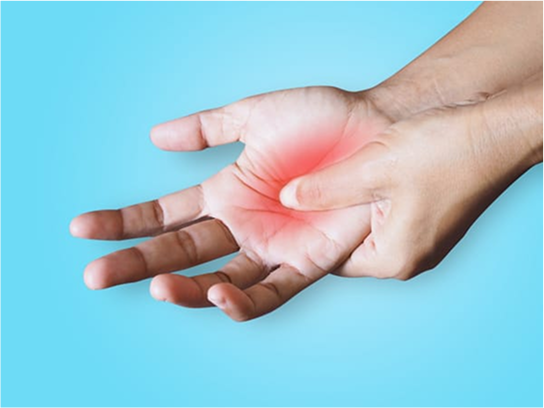CONDITIONS TREATeD / PERIPHERAL NEUROPATHY
Regenerate. Repair. Restore.
Stem Cells Therapy for Peripheral Neuropathy

Neuropathies are characterized by nerve damages.
Peripheral neuropathy refers to a condition when nerves that carry messages to and from the brain and spinal cord are damaged.
Treatments at World Health Stem Cells could help improve the symptoms of peripheral neuropathy including:
- Loss of sensation in the arms
and legs - Sharp, jabbing or throbbing pain
- Freezing or burning pain
- Tingling
- Numbness
- Lack of coordination and falling
- Muscle weakness or paralysis
- Heat intolerance and altered
sweating - Thinning of the skin
- Sexual dysfunction
- Buzzing or shocking sensation
What is peripheral neuropathy?
Peripheral nerves are nerves that carry signals to and from the brain and spinal cord. The signs and symptoms of peripheral neuropathy vary according to which nerves are damaged. Peripheral nerve damage can occur in the following areas:
- Arms
- Hands
- Feet
- Legs
- Internal organs
- Mouth
- Face
Causes of peripheral neuropathy?
Diabetes Mellitus is the leading cause of peripheral neuropathy.
Rheumatoid arthritis (RA) in adults, an erosive and potentially deforming inflammatory arthritis, has been associated with peripheral neuropathy.
Sjogren syndrome, which causes dry eyes and dry mouth, has been associated with hemispheric and spinal cord lesions.
Scleroderma, which causes skin hardening and fibrosis, may lead to peripheral neuropathy and trigeminal neuralgia (cranial neuropathy)
Systemic Lupus Erythematosus (SLE) is the most common type of lupus. The prevalence of peripheral neuropathy is relatively high in patients diagnosed with SLE. In a study of 1533 lupus patients, 207 patients suffered from neuropathy.
Lyme disease is a vector-borne disease that can result in neurological disorders such as peripheral neuropathy.
How can stem cell therapy improve the symptoms of peripheral neuropathy?
How can stem cell therapy improve the symptoms of peripheral neuropathy?
Mesenchymal stem cells produce:
- Proteins that support the growth and survival of neurons.
- Angiogenic factors that is essential for the healing, growth, development, and maintenance of blood vessels.
- Immunomodulatory substances that can reverse the damage to the nerves.
In 2015, researchers published the results of a study that used autologous stem cells to treat patients with diabetic foot gangrene caused by peripheral neuropathy. The results found stem cell treatment to be safe, and patients experienced less pain in their limbs, less cold sensation, and improved clinical symptoms. The ulcers healed gradually and the patient’s quality of life improved as a result.
“MSC transplantation is a new technology that can be used to treat the diabetic foot and is a well-studied topic in the field of angiogenesis. MSCs have high proliferative and self-renewal capabilities in addition to the ability to differentiate into multiple types of cells… The transplanted stem cells regulate the immune system by influencing the immune responses of T cells, natural killer cells, macrophages, and dendritic cells, and they participate in diabetic wound healing….”
Wu, Q. et. al., Mesenchymal Stem Cells as a Prospective Therapy
for the Diabetic 2016
What is the recommended treatment protocol for peripheral neuropathy at the World Health Stem Cells?
The World Health Stem Cells recommends the use of hUC-MSCs for the treatment of diabetic neuropathy. Treatment includes:
- Mesenchymal stem cells derived from human umbilical cord tissue.
- Antioxidant therapy with vitamin C and glutathione.
- Ozone therapy.
- Platelet-rich plasma therapy (PRP).

UMBILICAL CORD DONATIONS
How Are the Stem Cells Collected?
Our clinic focuses on obtaining healthy stem cells exclusively from umbilical cord blood donors. We collect the placenta once the baby is born, with the parent’s informed consent. Additionally, we follow strict ethical guidelines and collect stem cells from reliable and reputable sources.
INTRAVENUS ADMINISTRATION
How Are the Stem Cells Administered?
Our nursing staff administers the stem cells through an intravenous and intra-pulmonary route. For the most effective outcomes, intravenous administration is preferred.
Are You a Candidate for Stem Cell Therapy?
Stem cell therapy can change the quality of life for many, however not everyone is a candidate. Call our caring, experienced team to find out if stem cell therapy is right for you +1-305-777-7119
